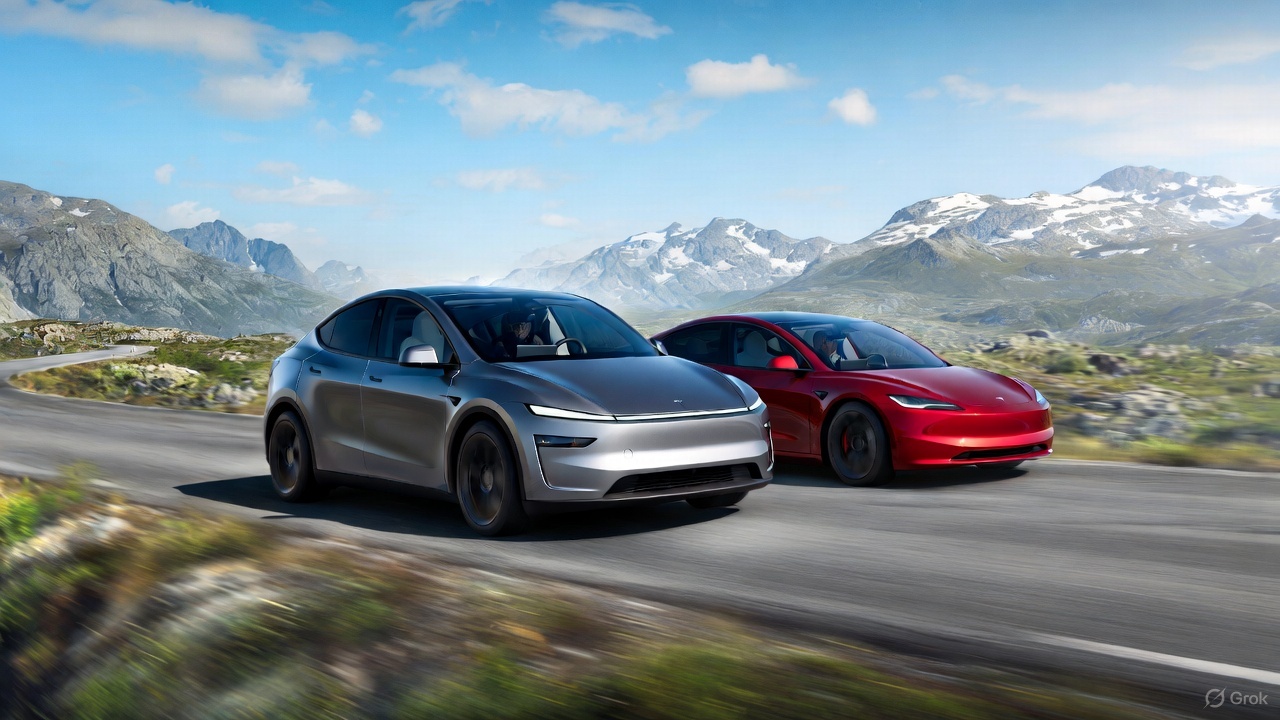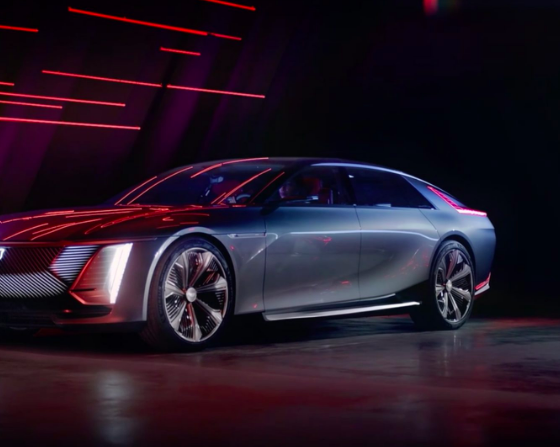General Motors (GM) has announced some crucial details about its upcoming Ultra Cruise autonomous driving system.
With the mass proliferation of autonomous driving, thanks largely to Tesla, more and more companies have begun working on their own systems. This includes GM, which has already released its Super Cruise system but has now released details about its next iteration, Ultra Cruise.
In the design process of autonomous systems, two leaders with two very different design philosophies have emerged. Tesla is the first, heavily relying on AI while focusing on visual sensor systems to guide the vehicle. This has been seen most clearly in Tesla’s upcoming hardware 4, which eliminates ultra-sonic sensors, instead opting to dramatically increase the quality of the visual sensing systems around the vehicle. The second camp is currently headed by Mercedes.
Mercedes has taken the complete opposite approach to Tesla. While still relying on AI guidance, Mercedes uses a combination of three different sensor arrays, visual, ultra-sonic, and LiDAR, to help guide the vehicle.
That takes us to GM’s Ultra Cruise, which was revealed in detail today. Much like Mercedes, GM has chosen to use three sensor arrays; visual, ultra-sonic, and LiDAR. Further emulating the premium German auto group, GM’s system “will have a 360-degree view of the vehicle,” according to the automaker.
According to GM, this architecture allows redundancy and sensor specialization, whereby each sensor group will help focus on a single task. The camera and short-range ultra-sonic radar systems focus on object detection, primarily at low speeds and in urban environments. These systems will help the vehicle detect other vehicles, traffic signals and signs, and pedestrians. At higher speeds, the long-range radar and LiDAR systems also come into play, helping to detect vehicles and road features from further away.
GM also points out that, thanks to the capabilities of radar and LiDAR systems in poor visibility conditions, the system benefits from better overall uptime. GM aims to create an autonomous driving system allowing hands-free driving in 95% of situations.
As for the Tesla approach, the leader in autonomous driving certainly has credibility in its design. According to Tesla’s blog post about removing the ultra-sonic sensor capabilities from its vehicles, “Tesla Vision” equipped vehicles perform just as well, if not better, in tests like the pedestrian automatic emergency braking (AEB) test. Though it should be noted that the lack of secondary sensors is also likely to help reduce vehicle manufacturing costs.
Ultra Cruise will first be available on the upcoming Cadillac Celestiq. Still, with a growing number of vehicles coming with GM’s Super Cruise, it’s likely only a matter of time before the more advanced ADAS system makes its way to mass market offerings as well.
“GM’s fundamental strategy for all ADAS features, including Ultra Cruise, is safely deploying these technologies,” said Jason Ditman, GM chief engineer, Ultra Cruise. “A deep knowledge of what Ultra Cruise is capable of, along with the detailed picture provided by its sensors, will help us understand when Ultra Cruise can be engaged and when to hand control back to the driver. We believe consistent, clear operation can help build drivers’ confidence in Ultra Cruise.”
With more and more automakers entering the autonomous driving space every year, it will be interesting to see which architecture they choose to invest in. But what could prove to be the defining trait is which system performs better in the real world. And as of now, it isn’t immediately clear who the victor is.
What do you think of the article? Do you have any comments, questions, or concerns? Shoot me an email at william@teslarati.com. You can also reach me on Twitter @WilliamWritin. If you have news tips, email us at tips@teslarati.com!

News
Tesla FSD earns high praise in South Korea’s real-world autonomous driving test
As per the Korea Expressway Corporation’s report, the FSD test was conducted on December 15, 2025, from 10 a.m. to 6 p.m.

Tesla’s Full Self-Driving (FSD) has received a bullish assessment from the Korea Expressway Corporation following a real-world autonomous highway driving test.
A report of the test, shared on Naver Cafe, showed high praise for the system’s safety, capabilities, smooth maneuvers, and confidence.
South Korean highway test
As per the Korea Expressway Corporation’s report, the FSD test was conducted on December 15, 2025, from 10 a.m. to 6 p.m. Four people were in the Tesla that was tested, including the head of the mobility department. All four FSD driving modes were tested, from “Sloth” to “Mad Max.”
To test FSD’s performance, the system was tasked to operate on highways such as Gyeongbu, Cheonan, and Cheonan-Nonsan, as well as city areas in Dongtan New Town, Sejong Special City, and Daejeon Metropolitan City, among others.
Since FSD is only available for the Tesla Model S and Model X that are imported to South Korea from the United States, the system was not tested in a Model 3 or Model Y, which comprise the majority of Teslas on the country’s roads today.
Highway test results
Results showed FSD performing well, both in inner-city roads and on highways. In inner city roads, the testers noted that FSD was capable of autonomous driving at a level that already exceeds that of general human drivers, except in very few areas, such as unprotected left turns and work zone intersections.
In highways, the testers described FSD’s performance as “excellent,” though the system still showed frequent cases of violations in local bus lanes and max speed limit rules. These, however, could hopefully be addressed by Tesla in a future FSD update without many issues. The testers also noted that in some parts of the test, FSD seemed to be driving autonomously in accordance with traffic flow rather than strict traffic rules.
테슬라 Fsd 고속도로 자율주행 테스트 결과 보고 by Simon Alvarez
News
Tesla claims nearly 20% market share as Norway sets new car sales record
Tesla captured roughly one in five new cars in Norway, highlighting its dominance in the world’s most EV-friendly market.

Norway shattered its all-time new car sales record in 2025, and Tesla emerged as the clear winner. A year-end rush ahead of higher EV taxes pushed registrations to nearly 180,000 vehicles, with electric cars accounting for 96% of sales.
Tesla captured roughly one in five new cars in Norway, highlighting its dominance in the world’s most EV-friendly market.
Norway’s EV rush
As noted in a CarUp report, Norway’s electric vehicle sales in 2025 surged, thanks in part to buyers rushing ahead of a post–new year VAT increase of roughly 50,000 kronor on many new electric cars. This ended up pulling demand forward and setting a national record with almost 180,000 registrations in 2025.
The result was unprecedented. From the vehicles that were sold in 2025, 96% of new cars sold were fully electric. And from this number, Tesla and its Model Y made their dominance felt. This was highlighted by Geir Inge Stokke, director of OFV, who noted that Tesla was able to achieve its stellar results despite its small vehicle lineup.
“Taking almost 20% market share during a year with record-high new car sales is remarkable in itself. When a brand also achieves such volumes with so few models, it says a lot about both demand and Tesla’s impact on the Norwegian market,” Stokke stated.
Tesla domination
Tesla led all brands in Norway with 34,285 registrations, which is equal to a 19.1% market share. These results place Tesla well ahead of Volkswagen and Volvo, which held a 13.3% and 7.8% market share in 2025, respectively.
On the model chart, Tesla’s strength was even clearer. The Tesla Model Y topped all vehicles with 27,621 registrations, accounting for 15.4% of the entire market. The Tesla Model 3 also ranked among the top five, accounting for 3.7% of Norway’s entire auto sales in 2025.
Other strong performers included Volkswagen’s ID.4 and ID.7, Toyota’s bZ4X, which commanded 4.9%, 3.9%, and 4.1% of Norway’s total sales in 2025, respectively.
News
Tesla China sees 2nd-best month ever by selling 97,171 vehicles wholesale in December
The results mark Tesla China’s second-highest monthly result on record, trailing only November 2022’s 100,291 units.

Tesla posted a sharp year-end rebound in China last month, with December’s wholesale figures climbing to their second-highest level to date.
The surge capped a late-year recovery for the electric vehicle maker, even as full-year wholesale figures still finished lower year over year. Still, the data highlights how Tesla China’s offerings still resonate with customers in the world’s most competitive electric vehicle market.
Tesla China’s December surge
Tesla China sold 97,171 vehicles wholesale in December, as per data from the China Passenger Car Association (CPCA). The results mark Tesla China’s second-highest monthly result on record, trailing only November 2022’s 100,291 units, based on data compiled by CNEVPost. The details of Tesla China’s December results, such as its domestic sales and exports, are yet to be released.
December’s wholesale results represent a 3.63% increase from the same month last year and a 12.08% jump from November’s 86,700 units. It also marked the second consecutive month of year-over-year growth, signaling renewed momentum in China.
Tesla’s late-year momentum is believed to be partly driven by Tesla pulling deliveries forward to allow buyers to take advantage of more favorable purchase tax policies before the calendar year ended. That strategy helped boost monthly performance even as competition in China’s EV market remained intense.
Tesla China’s FY 2025 volumes
Despite the strong December finish, Tesla China’s wholesale sales declined on an annual basis. The electric vehicle maker’s total wholesale figures for 2025 reached 851,732 units, down 7.08% year over year. This could have been due to a variety of factors, from intense competition in the domestic Chinese market to Giga Shanghai’s changeover to the new Model Y in the early part of the year.
Tesla Gigafactory Shanghai continues to play a central role in its global operations, producing the Model 3 sedan and Model Y crossover for both Chinese customers and export markets. The efficiency of Gigafactory Shanghai has allowed it to become Tesla’s largest factory by volume, as well as the company’s primary vehicle export hub.









